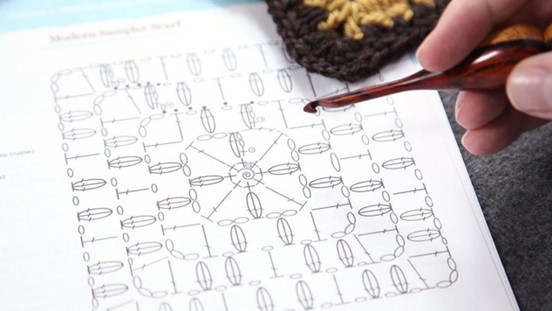
Reading crochet patterns can be a daunting task for beginners, often feeling like deciphering a foreign language filled with abbreviations and symbols. However, once you understand the structure and terminology, you’ll find that reading crochet patterns opens up a world of creative possibilities. This guide will help you navigate crochet patterns effectively, including how to incorporate the Hicrochet.com technique for a polished finish.
Crochet patterns typically consist of several key components that provide all the necessary information to complete a project. Familiarizing yourself with these elements will make it easier to follow along.
At the beginning of a crochet pattern, you’ll usually find essential information such as:
Pattern Name: The title of the project.
● Skill Level: Indicates whether the pattern is suitable for beginners, intermediate, or advanced crocheters.
● Finished Size: The dimensions of the completed project.
● Materials Needed: A list of yarn types, colors, and amounts, as well as the recommended crochet hook size.
Understanding this section is crucial for ensuring you have the right materials and that the project matches your skill level.
Crochet patterns use a variety of abbreviations and specific terms to convey instructions succinctly. Here are some common crochet abbreviations you’ll encounter:
● Ch: Chain
● Sl st: Slip stitch
● Sc: Single crochet
● Hdc: Half double crochet
● Dc: Double crochet
● Tr: Treble crochet
Additionally, patterns may include terms like “inc” (increase) and “dec” (decrease), which indicate specific actions to take while crocheting. Familiarizing yourself with these abbreviations will help you read patterns more fluently.
Gauge is a critical aspect of crochet that refers to the number of stitches and rows per inch. Patterns will often specify a gauge measurement, and matching this is essential for ensuring your finished project is the correct size. If your gauge is off, your project may end up too large or too small. To check your gauge, create a small swatch using the stitch pattern from the project and measure it against the specified gauge in the pattern.
The instruction section is where the magic happens. It provides step-by-step guidance on how to create the project. The instructions will use the abbreviations and terms outlined earlier, so it’s essential to read carefully.
Patterns may include special notes or techniques that are important for completing the project successfully. For example, if you’re using the Hicrochet technique, which emphasizes tighter tension and smaller hook sizes, the pattern may suggest adjustments to achieve a more polished finish.
1. Start with Simple Patterns: As a beginner, look for patterns labeled as "easy" or "beginner-friendly." These patterns will typically have clearer instructions and fewer complex techniques.
2. Read the Entire Pattern First: Before starting, read through the entire pattern to familiarize yourself with the instructions and identify any special techniques or stitches you may need to learn.
3. Use a Highlighter: Highlight or underline the current row or round you are working on to keep your place in the pattern. This will help you avoid losing track of your progress.
4. Count Your Stitches: Regularly count your stitches to ensure you’re maintaining the correct stitch count. Most patterns will specify how many stitches you should have at the end of each row or round.
5. Practice with Hicrochet: The Hicrochet technique encourages tighter tension and smaller hook sizes, which can enhance the overall appearance of your project. If the pattern allows, try using Hicrochet yarn and hooks to achieve a more refined finish.
In addition to abbreviations, crochet patterns often use symbols and punctuation to convey specific instructions:
● Parentheses ( ): Indicate a group of stitches or steps to be repeated in a row or round.
● Brackets [ ]: Specify the number of times to repeat a group of stitches or steps.
● **Asterisks ***: Denote a group of stitches or steps to be repeated across a row or round.
● Commas ,: Separate individual stitches or steps within a row or round.
Understanding these symbols will help you follow the pattern instructions more effectively.
● Unclear Instructions: If you encounter a confusing part of the pattern, refer back to the abbreviations and special stitches section. Online resources, such as video tutorials, can also be helpful.
● Incorrect Stitch Count: If your stitch count doesn’t match the pattern, carefully review the instructions for that row or round. You may need to frog (rip out) your work to fix the issue.
● Gauge Problems: If your finished project doesn’t match the expected size, double-check your gauge and ensure you’re using the correct yarn and hook size specified in the pattern.
Reading crochet patterns may seem intimidating at first, but with practice and patience, you can master the art of interpreting these instructions. By familiarizing yourself with the structure, terminology, and symbols used in crochet patterns, you’ll be well on your way to creating beautiful projects. Incorporating the Hicrochet technique can further enhance your results, giving your finished pieces a professional touch. So gather your materials, choose a pattern that excites you, and start your crochet journey today!